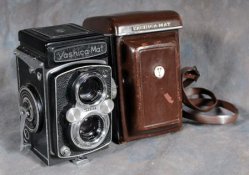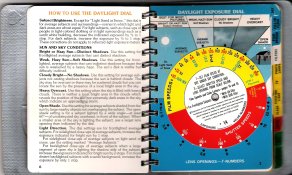If you have a smartphone, there are a number of exposure meter apps (some free) out there you can get, and they work really well, I find. I am only aware of light meter apps that are "reflective" (i.e. they measure the light reflecting off the subject and coming to the film), which is the way exposure meters built into cameras work. An "incident" meter, which actually measures the light hitting the subject, is more accurate (since it's not fooled by excessively bright or dark subjects), but more complicated to use.
Someone has already directed you to the butkus camera instruction manuals site, so hopefully you can find the right one for your particular camera there. But the Yashica Mats all work more or less the same way; some have light meters, or the capacity to accept 220 film (takes 24 exposures; very hard to find these days). Basically, you load the unexposed film in the compartment at the bottom of the camera, making sure the printed side of the film backing paper is facing outward (i.e. against the back of the camera. Insert the tip of the film paper into the slot in the empty spool that's sitting in the top compartment (I hope the camera came with an empty spool; can't do anything without one!). Then, wind the crank clockwise so the film is being wound onto the top spool, until the large arrow on the back of the film paper (looks like <-------->) lines up with the two small red dots you see on either side of the film, just below the square opening where the film is exposed. Once you've line up the arrow with those dots (what are often called the "start marks"), close and lock the back, and then continue to wind the crank until it stops -- the frame counter on the camera should now be at frame #1. To cock the shutter, turn the crank counterclockwise until it stops. Set the shutter speed and aperture, and push the shutter release! You can then wind on to the next frame.
Here is a link to a very comprehensive site on the Yashica TLR models, like your Yashica Mat:
http://www.yashicatlr.com/index.html









